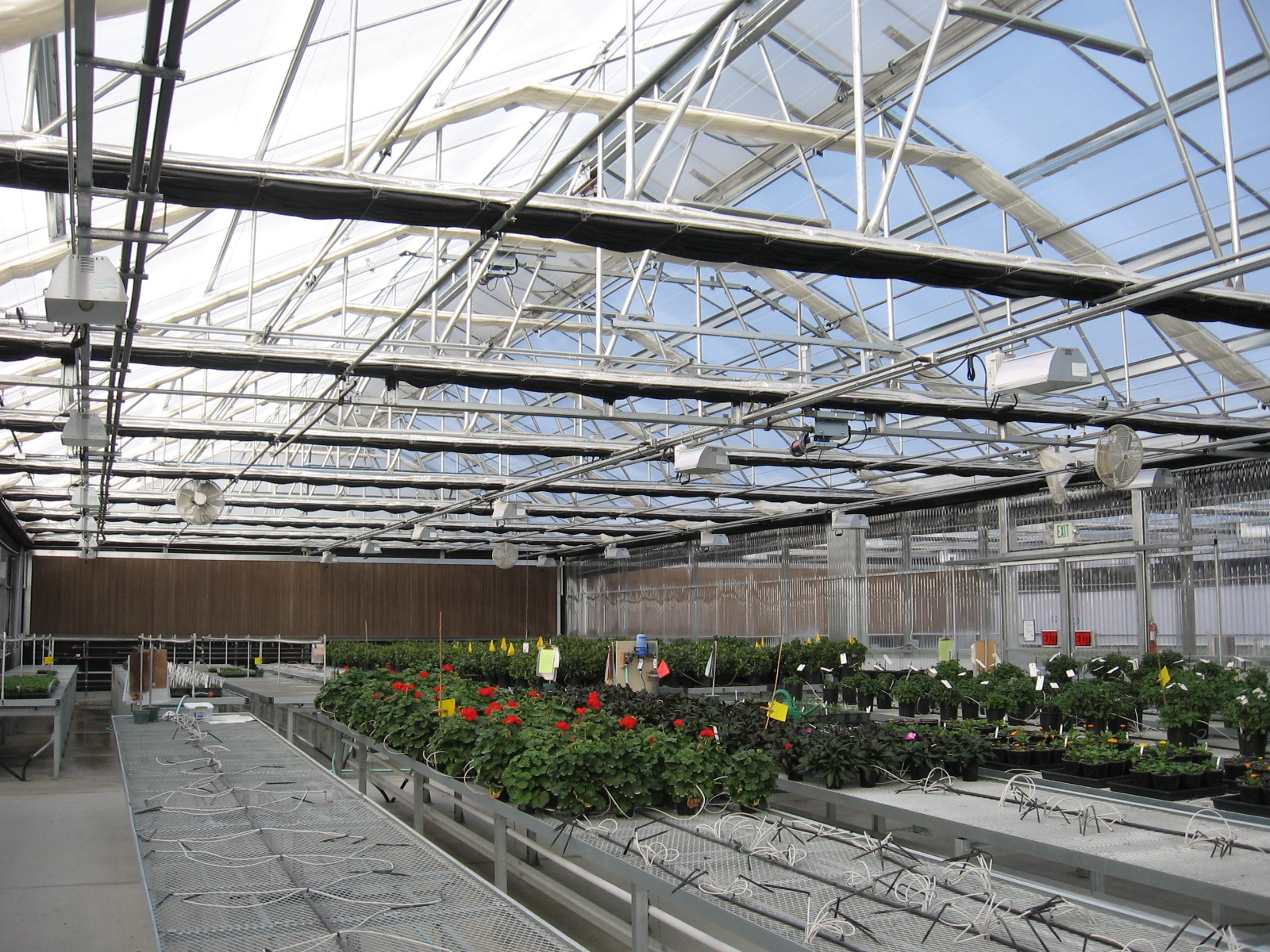Custom Drip Irrigation Systems
Overhead Greenhouse Drip Irrigation
Greenhouse Drip irrigation is a slow water delivery system in which water can be applied, drop by drop, to the soil surface near the base of the plant. A properly designed automatic drip irrigation system can remove the guesswork about when to irrigate and how much water to apply. Greenhouse Drip Irrigation can be applied through soil saturation sensors. Water is applied whenever the sensor indicates a sub-optimum soil moisture level.
Automated Greenhouse Drip Irrigation is a valuable tool for accurate soil moisture control in greenhouse production. Total automation of drip irrigation offers a simple, precise method for sensing soil moisture and applying water. Management time savings and the removal of human error in estimating and adjusting available soil moisture levels enable skilled growers to maximize net profits.
Greenhouse Drip Irrigation: Available Soil Moisture
Available soil moisture is an important limiting factor in growth and productivity. Greenhouse growers commonly estimate the availability of soil moisture by plant and soil appearance. Slight wilting of succulent terminal leaves indicate water stress in plants. Squeeze handfuls of soil taken from near the surface at several locations in your greenhouse. Soil that does not stay compressed in a tight ball is considered too dry.
Water deficiency can be detrimental to plants before visible wilting occurs. Slowed growth rate, lighter weight fruit, and, in tomato, blossom end rot often follow slight water deficiencies. Replacing traditional methods of estimating available soil moisture with a more accurate method is necessary to maintain optimum soil moisture levels.
Conventional irrigation methods usually wet plants with lower leaves and stems. The entire soil surface is saturated and often stays wet long after irrigation is completed. Such conditions promote infection by gray mold-rot (Botrytis) and leaf mold fungi.
Most greenhouse vegetable plants remove large amounts of water from soil at the 10" to 12" depth. An accurate estimate of available soil moisture at this important depth cannot be made by testing the top few inches of soil. In a greenhouse on a sunny day, transpiration and evaporation can occur so rapidly that excessive water loss can cause plant damage before sufficient water can be applied to correct moisture stress. Water stress, no matter how slight, will cause a significant reduction in harvest weight.
Greenhouse Drip Irrigation: Efficiency
Drip irrigation is arguably the most efficient method of providing water to trees, crops, gardens, and landscapes. The efficiency of overhead irrigation, such as rotors and pop-up spray heads, is typically 50 percent and rarely exceeds 70 percent. The efficiency of a well-designed drip irrigation system can reach nearly 100 percent. Drip has numerous other benefits as well:
Greenhouse Drip Irrigation: Benefits
Voeks, Inc., can tailor your greenhouse irrigation system to deliver the precise amount of water required by individual plants.
Using automatic drip irrigation systems, skilled greenhouse managers can increase production if other factors are not limiting.
Contact us for a free consultation to explore all the options available to you for your drip needs!


